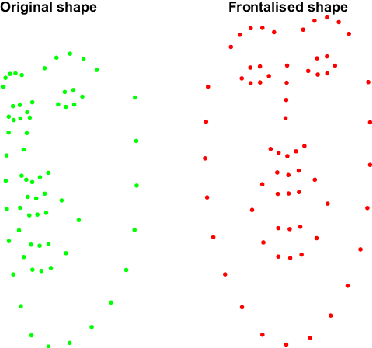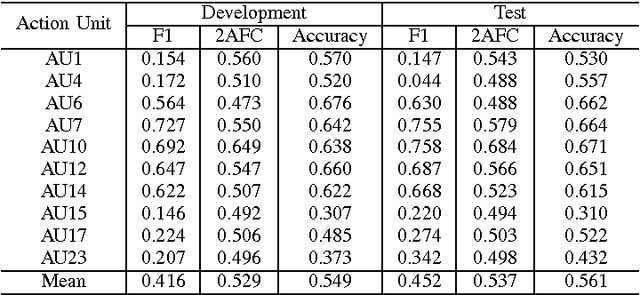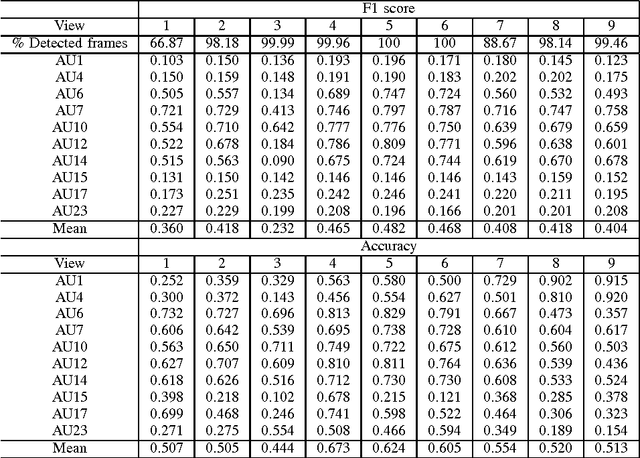Jeffrey M. Girard
LlaMADRS: Prompting Large Language Models for Interview-Based Depression Assessment
Jan 07, 2025Abstract:This study introduces LlaMADRS, a novel framework leveraging open-source Large Language Models (LLMs) to automate depression severity assessment using the Montgomery-Asberg Depression Rating Scale (MADRS). We employ a zero-shot prompting strategy with carefully designed cues to guide the model in interpreting and scoring transcribed clinical interviews. Our approach, tested on 236 real-world interviews from the Context-Adaptive Multimodal Informatics (CAMI) dataset, demonstrates strong correlations with clinician assessments. The Qwen 2.5--72b model achieves near-human level agreement across most MADRS items, with Intraclass Correlation Coefficients (ICC) closely approaching those between human raters. We provide a comprehensive analysis of model performance across different MADRS items, highlighting strengths and current limitations. Our findings suggest that LLMs, with appropriate prompting, can serve as efficient tools for mental health assessment, potentially increasing accessibility in resource-limited settings. However, challenges remain, particularly in assessing symptoms that rely on non-verbal cues, underscoring the need for multimodal approaches in future work.
Context-Dependent Models for Predicting and Characterizing Facial Expressiveness
Dec 10, 2019



Abstract:In recent years, extensive research has emerged in affective computing on topics like automatic emotion recognition and determining the signals that characterize individual emotions. Much less studied, however, is expressiveness, or the extent to which someone shows any feeling or emotion. Expressiveness is related to personality and mental health and plays a crucial role in social interaction. As such, the ability to automatically detect or predict expressiveness can facilitate significant advancements in areas ranging from psychiatric care to artificial social intelligence. Motivated by these potential applications, we present an extension of the BP4D+ dataset with human ratings of expressiveness and develop methods for (1) automatically predicting expressiveness from visual data and (2) defining relationships between interpretable visual signals and expressiveness. In addition, we study the emotional context in which expressiveness occurs and hypothesize that different sets of signals are indicative of expressiveness in different contexts (e.g., in response to surprise or in response to pain). Analysis of our statistical models confirms our hypothesis. Consequently, by looking at expressiveness separately in distinct emotional contexts, our predictive models show significant improvements over baselines and achieve comparable results to human performance in terms of correlation with the ground truth.
FERA 2017 - Addressing Head Pose in the Third Facial Expression Recognition and Analysis Challenge
Feb 14, 2017



Abstract:The field of Automatic Facial Expression Analysis has grown rapidly in recent years. However, despite progress in new approaches as well as benchmarking efforts, most evaluations still focus on either posed expressions, near-frontal recordings, or both. This makes it hard to tell how existing expression recognition approaches perform under conditions where faces appear in a wide range of poses (or camera views), displaying ecologically valid expressions. The main obstacle for assessing this is the availability of suitable data, and the challenge proposed here addresses this limitation. The FG 2017 Facial Expression Recognition and Analysis challenge (FERA 2017) extends FERA 2015 to the estimation of Action Units occurrence and intensity under different camera views. In this paper we present the third challenge in automatic recognition of facial expressions, to be held in conjunction with the 12th IEEE conference on Face and Gesture Recognition, May 2017, in Washington, United States. Two sub-challenges are defined: the detection of AU occurrence, and the estimation of AU intensity. In this work we outline the evaluation protocol, the data used, and the results of a baseline method for both sub-challenges.
 Add to Chrome
Add to Chrome Add to Firefox
Add to Firefox Add to Edge
Add to Edge